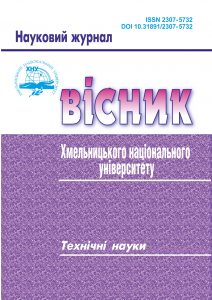THE NEGATIVE IMPACT OF REVERSE OSMOSIS INSTALLATIONS ON THE ENVIRONMENT AND THE SEARCH FOR WAYS TO REDUCE IT
DOI:
https://doi.org/10.31891/2307-5732-2023-329-6-150-156Keywords:
reverse osmosis, regeneration, permeate, concentrate, acetic acid, malic acidAbstract
The reverse osmosis membrane contributes to the demineralization of drinking water due to its structural features. Water molecules pass through the pores of the membrane under pressure, while molecules larger than the diameter of the pores are separated and discharged together with the concentrate into the sewage network. It is known that the main substances of natural waters deposited on the membrane are: metal hydroxides, silicates, aluminosilicates, humic substances, surface-active substances (surfactants), metasilicic acid (H2SiO2), sodium chloride (NaCl), calcium carbonate), calcium chloride (CaCl2), magnesium hydroxide Mg(OH)2, microorganisms.
According to research data, as a result of further purification of tap water by the reverse osmosis method using the membrane of the American company Filmtec type TW30-1812-50, at a working pressure of 18 atm, the smell, aftertaste, color and turbidity completely disappear, the overall hardness is reduced by 90–94%, iron content is almost 100%. At the stage of purification, nitrogen, nitrates and nitrites are removed from the water through activated carbon, the iron content and the hydrogen index are reduced.
Reverse osmosis technology is extremely effective, because it removes up to 99% of all possible water pollutants, but from the point of view of safety for the environment, it has a number of disadvantages: a significant amount of water that is not used in everyday life, but is discharged into sewage networks (permeate/concentrate: 70/30); non-separable carbon cartridges, mineralizers and UV sterilizers that enrich and disinfect water after membrane purification; mechanical polypropylene cartridges (subject to regeneration); membrane blocks (partially subject to regeneration); moncentrate, saturated with pollutants that were formed as a result of water purification. Therefore, the issue of regeneration of replaceable blocks (filters, cartridges and membranes) is important. This will reduce the burden on the environment, reduce the number of discarded membranes, and reduce the cost of maintaining reverse osmosis units and purchasing new components.
In the course of research, it was determined that the best cleaner for the membranes of reverse osmosis installations is an aqueous acidic environment (that is, which has a pH of 2 to 3.5). An increase in acidity, i.e. an approach of pH to 2, ensures the dissolution of water-insoluble calcium salts, silica, iron compounds and organic pollutants. It is clear that it is impossible to achieve such a pH with solutions of malic and acetic acids, so the membrane cleaning will be partial. The most efficient cleaning of contaminated membranes was achieved when iron was removed from the membrane in the amount of 1.6 g/l. using a solution of malic acid.

